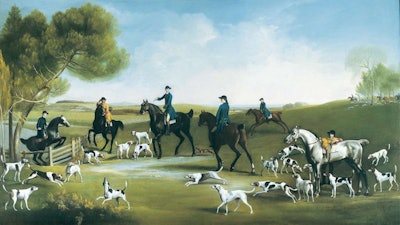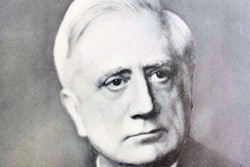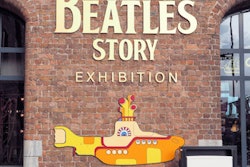
During his distinguished career, Dr. Simon Rees developed a well-deserved reputation as an excellent cardiac radiologist. His eminence is shown by his appointment as a radiologist to the British royal family, though he was apparently somewhat frustrated by the portable x-ray machine that was used at the palace.
 Dr. Simon Rees on his horse, Jim, during a famous "hunting Saturday." All photos courtesy of Ted Rees.
Dr. Simon Rees on his horse, Jim, during a famous "hunting Saturday." All photos courtesy of Ted Rees.For those training in radiology in the 1970s and 1980s, the go-to book on the heart was "Clinical Cardiac Radiology," by Keith Jefferson and Simon Rees. The first edition was published in 1973, and the second edition came out in 1980. The title is slightly misleading, since the book was essentially about the interpretation of the plain film in congenital and acquired heart disease, and it incorporated the new data that had been derived from angiocardiography and CT scanning. The book is still useful today, as shown by the high second-hand price that it commands.
Rees joined the staff of the Royal Brompton Hospital in the early 1990s and became the director of the department of radiology. This was at a difficult time in its history, with an imminent merger of the National Heart Hospital with the Brompton. He showed himself to be a natural diplomat and a skilled conciliator at a difficult time for both hospitals.
Rees was very open to new innovations at a time when radiology was developing rapidly. He learned the new technology of cardiac MRI. As his younger colleague Prof. David Hansell notes, the phrase "you can't teach an old dog new tricks" could never be applied to his colleague. Indeed, when filmless radiology was in its early days, it was Rees who had to persuade Hansell that the Brompton should be an early adopter of this cutting-edge technology.
Tragic air crash
Rees was born in 1933 in Carmarthen to Welsh-speaking parents, but he was brought up to speak English as his first language. He became the head chorister at St George's Chapel in Windsor, and after attending Harrow School, he read medicine at Gonville and Caius College in Cambridge. His clinical student years were at Westminster Hospital in London.
In 1957 he was working at St Mary's Hospital in Newport, Isle of Wight, for his first postqualification appointment. On 15 November, an Aquila Airways Short Solent 3 flying boat named the City of Sydney, was on a night flight from Southampton to Las Palmas and Madeira via Lisbon, and it crashed near Chessell.
Rees was the only doctor on duty, and along with a nurse and a porter, he cared for the badly burnt survivors. Of the 58 onboard the flying boat, 43 were killed instantly and 15 were injured. Two of the survivors later succumbed to their injuries. Rees treated the burns patients with morphine, and also assisted with their repatriation to the mainland to specialist burns units.
At the time, this was the second-worst aircraft accident within the U.K. and the worst ever air disaster to occur on English soil. This must have been a highly traumatic introduction to medical practice for such a young doctor.
 Rees was generous, thoughtful, funny, and loyal, friends say.
Rees was generous, thoughtful, funny, and loyal, friends say.When he returned to London, Rees had a number of junior posts. He took the examination for membership of the Royal College of Physicians a total of seven or eight times -- much to the annoyance of his disapproving uncle, Bob! Rees then decided to become a radiologist, undergoing his training at St. George's Hospital, then located at Hyde Park Corner. He was awarded the Fellowship of the Royal College of Radiologists in 1965. And in 1966, he was appointed consultant radiologist at the National Heart Hospital in London.
Love of hunting
Rees retired at the age of 59. He then spent several months furtively researching and writing a book, "The Charlton Hunt: A history," which was published in 1998. His book is beautifully written and illustrated, and it shows his passion for horses and following the hunt on his "hunting Saturdays."
The Charlton Hunt was founded in the 1670s, and soon became popular among the gentry. From the reign of Charles II, almost every noble family in England had a representative at Charlton. For about 70 years in the late 17th and early 18th centuries, the Charlton Hunt was unequaled in England, and it had the earliest record of a pack of foxhounds. Its first proprietor was the ill-fated Duke of Monmouth, and it was the first hunt to establish a club, the members building themselves a dining hall.
 "The Charlton Hunt," by George Stubbs, 1759. The third Duke of Richmond is riding a black horse in the middle of the painting.
"The Charlton Hunt," by George Stubbs, 1759. The third Duke of Richmond is riding a black horse in the middle of the painting.During weekends, Rees enjoyed following the hounds in the Charlton countryside in Sussex, south of London. As a hunting doctor, his medical skills were often called for when someone fell off their horse. He refounded the Charlton Hunt as a dining club and established an annual dinner at Fox Hall in the village.
He simply loved the sporting life and his son Jasper said that he was at his happiest when he was in the Loire Valley, France, hunting with his friend, the Duke of Brissac. Following an evening get-together, he once gave a speech to thank the French hosts, exclaiming, "Veeve la Fronce! Veeve l'Ongalterre! Veeve la chasse!"
Rees was an active sportsman, being a keen cricketer, skier, and tennis player. He was a remarkable man. Radiology was only a part of his life, which was also full of family, sports, singing, and the hunt. He was well described as being unfailingly generous, thoughtful, funny, and loyal. Many will cherish his memory.
Finally, I'd like to thank Simon's son, Ted Rees, and Prof. David Hansell for their help with this tribute.
 Dr. Adrian Thomas. Image courtesy of the BIR.
Dr. Adrian Thomas. Image courtesy of the BIR.Dr. Adrian Thomas is chairman of the International Society for the History of Radiology and honorary historian at the British Institute of Radiology.
The comments and observations expressed herein do not necessarily reflect the opinions of AuntMinnieEurope.com, nor should they be construed as an endorsement or admonishment of any particular vendor, analyst, industry consultant, or consulting group.



















